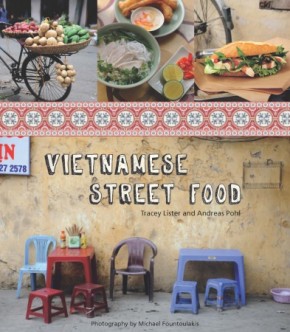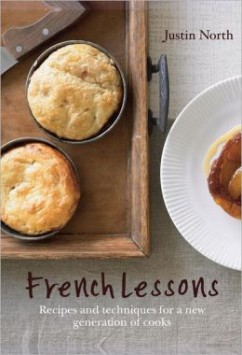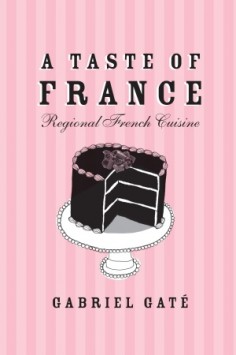The Artisan Marshmallow
Marshmallows—those favorite treats from childhood—have experienced a resurgence of interest in recent times, finding themselves on the dessert menus of some very serious restaurants.
Learn to bake soft, fluffy marshmallows in every shape, size, color, and flavor! Marshmallows—those favorite treats from childhood—have experienced a resurgence of interest in recent times, finding themselves on the dessert menus of some very serious restaurants. This once humble confectionery can now also be found in the finest cake and patisserie stores across the globe. The Artisan Marshmallow pays high respect to these sweet delights, which can be so much more than pink or white puffs! The Artisan Marshmallow cookbook includes more than forty marshmallow recipes to suit every taste; there are chapters for easy marshmallows and fruity marshmallows, chapters for swirly ones, cutesy ones, and boozy ones. Every recipe has detailed, easy-to-follow instructions and is accompanied by a full-color photograph of the marshmallow delight. Try your hand at the easy Mocha Latte, the fruity Apple, Cinnamon and Rose, or the delicious Honey and Peanut Butter Swirl. Get creative with Chocolate and Chili, Pomegranate with Pistachio Praline, or Japanese Green Tea with Black Sesame. And if you’re after more than just a marshmallow, there is a chapter filled with delicious recipes for marshmallow-based treats such as Cosmopolitan Rocky Road, Peanut Butter and Jelly Marshmallow Squares, and Raspberry Shortbread Kisses. Whatever your flavor, The Artisan Marshmallow has it all. You’ve never seen marshmallows this exciting!
Paige Couture loves all things sweet! When she’s not creating crazy marshmallows in her kitchen, she’s out riding her bike in search of the perfect treat.
“I’m so glad I took a chance and decided to make marshmallows myself, because I’m so impressed not only with the ease of preparing them, but with the fantastic results.” -MissionFood
Classic Vanilla
Fresh Ginger & Lemon
Chai
Passionfruit Snowballs
Classic Vanilla
515 g (1 lb 2½ oz/2¼ cups)caster (super_ ne) sugar
1 tablespoon glucose syrup
2 tablespoons powdered gelatine
70 g (2½ oz/2 large) egg whites, at room temperature
2 teaspoons vanilla bean paste or vanilla extract
Coloured sanding sugar to decorate (see Notes)
20 lollipop sticks (see Notes)
COATING
30 g (1 oz/¼ cup) icing (confectioners’) sugar
30 g (1 oz/¼ cup) corn_ our (cornstarch)
NOTES
Notes: Keep in an airtight container for 2–3 days. These classic marshmallows are delicious tossed in toasted shredded coconut. Sanding sugar and lollipop sticks are available from specialty cake decorating stores or online.
• Lightly spray a 25 x 30 cm (10 x 12 in) baking tin with oil, line the base and two
long sides with non-stick baking paper and lightly spray the paper with oil.
• Combine 460 g (1 lb ¼ oz/2 cups) of the sugar, the glucose and 185 ml (6¼ _ oz/
¾ cup) water in a small, deep heavy-based saucepan. Stir over low heat until the
sugar dissolves. Bring to the boil and simmer, without stirring, until the syrup reaches
127°C (260°F) on a sugar thermometer (this is the upper end of the hard-ball stage).
Watch it carefully, as the syrup has a tendency to bubble up.
• Meanwhile, slowly sprinkle the gelatine over 185 ml (6¼ _ oz/¾ cup) cold water in
a shallow microwave-safe bowl and set aside for 5 minutes. Heat in the microwave
for 30–45 seconds on High (100%), or until the gelatine has dissolved and the liquid
is clear.
• When the sugar syrup reaches 115°C (239°F), whisk the egg whites in an electric
mixer with a whisk attachment on medium speed. When frothy, increase the speed
to medium–high and gradually add the remaining sugar, whisking until thick and
glossy. Keep the mixer running on medium speed.
• When the sugar syrup reaches 127°C (260°F), turn off the heat. When the bubbles
subside, carefully add the dissolved gelatine – take care, as the mixture may bubble up.
• Increase the mixer speed to medium–high and gradually pour the hot syrup mixture
down the inside of the bowl in a thin, steady stream. Increase the speed to high and
continue whisking until the mixture is thick. Add the vanilla bean paste or extract and
whisk until the mixture is very thick and holds its shape, about 10–12 minutes, depending
on your mixer. The outside of the bowl should almost be at room temperature.
• Use a spatula to scrape the marshmallow mixture into the prepared tin and smooth
the surface. Stand for 2–3 hours, until set.
• Meanwhile, to make the coating, sift the icing sugar and corn_ our together.
• Dust the top of the marshmallow with some of the coating and turn out onto a clean
surface. Dust the bottom with more coating. Use a variety of cutters or a large knife
sprayed lightly with oil to cut the marshmallow into bite-sized pieces. Roll the sticky
sides of each marshmallow in the sanding sugar or toss in the remaining coating,
dusting off the excess. Carefully insert the lollipop sticks.
Fresh Ginger & Lemon
515 g (1 lb 2½ oz/2¼ cups) caster (superfine) sugar
1 tablespoon glucose syrup
2 tablespoons powdered gelatine
70 g (2½ oz/2 large) egg whites, at room temperature
1 teaspoon finely grated ginger
1 teaspoon finely grated lemon zest
50 g (1¾ oz) glacé ginger, finely sliced (optional)
Decorative letters to decorate, if desired
Note: Keep in an airtight container for 2–3 days.
• Lightly spray a 25 x 30 cm (10 x 12 in) baking tin with oil, line the base and two long
sides with non-stick baking paper and lightly spray the paper with oil. Combine 460
g (1 lb ¼ oz/2 cups) of the sugar, the glucose and 185 ml (6¼ fl oz/¾ cup) water in a
small, deep heavy-based saucepan. Stir over low heat until the sugar dissolves. Bring to
the boil and simmer, without stirring, until the syrup reaches 127°C (260°F) on a sugar
thermometer (this is the upper end of the hard-ball stage). Watch it carefully, as the
syrup has a tendency to bubble up.
• Meanwhile, slowly sprinkle the gelatine over 185 ml (6¼ fl oz/¾ cup) cold water in
a shallow microwave-safe bowl and set aside for 5 minutes. Heat in the microwave
for 30–45 seconds on High (100%), or until the gelatine has dissolved and the liquid
is clear.
• When the sugar syrup reaches 115°C (239°F), whisk the egg whites in an electric
mixer with a whisk attachment on medium speed. When frothy, increase the speed
to medium–high and gradually add the remaining sugar, whisking until thick and
glossy. Keep the mixer running on medium speed.
• When the sugar syrup reaches 127°C (260°F), turn off the heat and allow the bubbles
to subside.
• Increase the mixer speed to medium–high and gradually pour the gelatine mixture
down the inside of the bowl in a thin, steady stream. Add the hot sugar syrup in the
same manner. Increase the speed to high and continue whisking until the mixture is
thick. Add the ginger and lemon zest and whisk until the mixture is very thick and
holds its shape, about 10–12 minutes, depending on your mixer. The outside of the
bowl should almost be at room temperature.
• Use a spatula to scrape the marshmallow mixture into the prepared tin and smooth
the surface. Stand for 2–3 hours until set.
• Use a large knife sprayed lightly with oil to cut the marshmallow into bite-sized pieces.
Top with decorative letters or sprinkle with the glacé ginger if using.
Chai
185 ml (6¼ fl oz/¾ cup) milk
3 chai tea bags
515 g (1 lb 2½ oz/2¼ cups) caster (superfine) sugar
1 tablespoon glucose syrup
2 tablespoons powdered gelatine
70 g (2½ oz/2 large) egg whites, at room temperature
SPICE SUGAR COATING
75 g (2½ oz/¹⁄³ cup) sugar
½ teaspoon ground cinnamon
½ teaspoon ground ginger
½ teaspoon ground star anise
NOTE: Keep in an airtight container for 2–3 days. For this picture, we piped the marshmallow mixture into long lines with a plain 5 mm (¼ in) nozzle. Once set, it was cut into small lengths and tossed in the spice coating.
• Lightly spray a 20 x 30 cm (8 x 12 in) slice tin with oil, line the base and two long sides
with non-stick baking paper and lightly spray the paper with oil. Bring the milk to
a simmer in a small saucepan, add the tea bags and infuse for 5 minutes to make a
strong tea. Cool slightly.
• Combine 460 g (1 lb ¼ oz/2 cups) of the sugar, the glucose and 185 ml (6¼ fl oz/¾ cup)
water in a small, deep heavy-based saucepan. Stir over low heat until the sugar
dissolves. Bring to the boil and simmer, without stirring, until the syrup reaches 127°C
(260°F) on a sugar thermometer (this is the upper end of the hard-ball stage). Watch
it carefully, as the syrup has a tendency to bubble up.
• Meanwhile, pour the chai into a shallow microwave-safe bowl, slowly whisk in the
gelatine and set aside for 5 minutes. Heat in the microwave for 30–45 seconds on
High (100%), or until the gelatine has dissolved.
• When the sugar syrup reaches 115°C (239°F), whisk the egg whites in an electric
mixer with a whisk attachment on medium speed. When frothy, increase the speed
to medium–high and gradually add the remaining sugar, whisking until thick and
glossy. Keep the mixer running on medium speed.
• When the sugar syrup reaches 127°C (260°F), turn off the heat and allow the bubbles
to subside.
• Increase the mixer speed to medium–high and gradually pour the gelatine mixture
down the inside of the bowl in a thin, steady stream. Add the hot sugar syrup in the
same manner. Increase the speed to high and whisk until the mixture is very thick and
holds its shape, about 6–8 minutes, depending on your mixer. The outside of the bowl
should almost be at room temperature.
• Use a spatula to scrape the marshmallow mixture into the prepared tin and smooth
the surface. Stand for 2–3 hours, until set.
• Meanwhile, to make the spice sugar coating, mix the sugar and spices together.
• Dust the top of the marshmallow with some of the coating and turn out onto a clean
surface. Dust the bottom with more coating. Use a large knife sprayed lightly with oil
to cut the marshmallow into 15 squares, then cut each square into two triangles. Toss
the marshmallow pieces in the remaining coating, dusting off excess.
Passionfruit Snowballs
10 passionfruit, halved
515 g (1 lb 2½ oz/2¼ cups) caster (superfine) sugar
1 tablespoon glucose syrup
1½ tablespoons powdered gelatine
70 g (2½ oz/2 large) egg whites, at room temperature
COATING
180 g (6¼ oz/3 cups) shredded coconut, toasted
NOTES
Keep in an airtight container for 1–2 days. If you have some marshmallow mixture left over, you can spoon or pipe dollops onto a lightly oiled tray or spread over the base of a small pan to set.
Add a few drops of yellow food colouring if you’d like to intensify the ‘passionfruit’ colour.
• Lightly spray four 12-hole round-based gem irons, 30 ml (1 fl oz) silicon baking moulds
or 30 ml (1 fl oz) mini muffin pans with oil. Scoop the passionfruit pulp into a sieve set
over a shallow microwave-safe bowl to catch the juice. Discard the seeds. You will need
200 ml (7 fl oz) of juice for this recipe. If you do not have quite enough juice, make up
the difference with water.
• Combine 460 g (1 lb ¼ oz/2 cups) of the sugar, the glucose and 185 ml (6¼ fl oz/¾ cup)
water in a small, deep heavy-based saucepan. Stir over low heat until the sugar
dissolves. Bring to the boil and simmer, without stirring, until the syrup reaches 121°C
(250°F) on a sugar thermometer (hard-ball stage). Watch it carefully, as the syrup has
a tendency to bubble up.
• Meanwhile, slowly sprinkle the gelatine over the passionfruit juice and set aside
for 5 minutes. Heat in the microwave for 30–45 seconds on High (100%), or until
the gelatine has dissolved.
• When the sugar syrup reaches 112°C (234°F), whisk the egg whites in an electric
mixer with a whisk attachment on medium speed. When frothy, increase the speed
to medium–high and gradually add the remaining sugar, whisking until thick and
glossy. Keep the mixer running on medium speed.
• When the sugar syrup reaches 121°C (250°F), turn off the heat. When the bubbles
subside, carefully add the gelatine mixture – take care, as the syrup may bubble up.
• Increase the mixer speed to medium–high and gradually pour the hot syrup mixture
down the inside of the bowl in a thin, steady stream. Increase the speed to high
and continue whisking until the mixture is very thick and holds its shape, about
8–10 minutes, depending on your mixer. The outside of the bowl should almost be
at room temperature.
• Spoon or pipe the marshmallow mixture into the oiled moulds, ensuring the surface
of each is flat. Stand for 2–3 hours, until firm but sticky.
• Slide 2 marshmallows out of their moulds and sandwich together. They should be
sticky enough to join together securely. Repeat with the remaining marshmallows,
then roll in the coconut to cover completely.











Leave a Reply